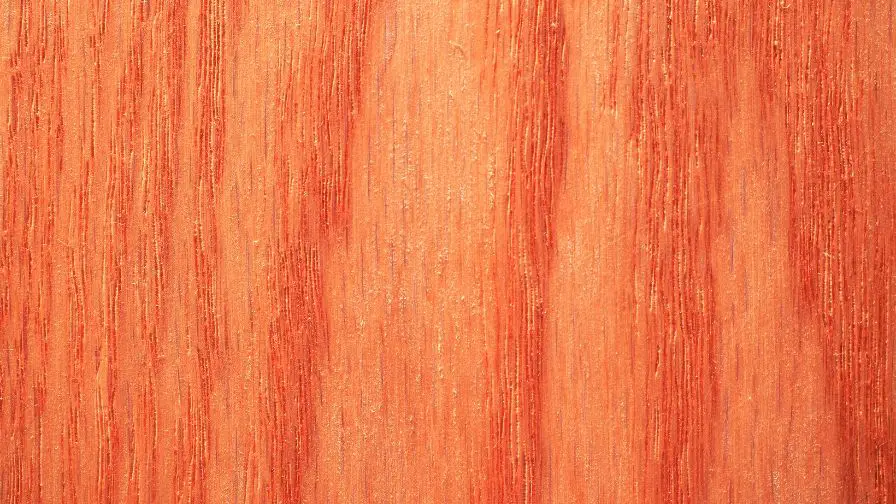
There are a lot of questions that people have about woodworking, and one of the most common is whether or not to use tung oil on red oak.
In this blog post, we will explore the pros and cons of using tung oil on red oak so that you can make an informed decision about what is best for your project.
Should I Use Tung Oil On Red Oak?
Yes, you should use Tung Oil on Red Oak. Many people choose to use tung oil on their red oak floors or furniture because it gives the wood a natural, deep color that enhances the grain.
Red oak is a very popular type of wood for furniture and floors. It’s beautiful, durable, and easy to care for. However, there are some pros and cons to using tung oil on red oak that you should be aware of before making a decision.
One of the biggest pros of using tung oil on red oak is that it’s a very natural product. It’s been used for centuries to protect and enhance the wood of boats and furniture. Tung oil is non-toxic and doesn’t contain any harmful chemicals.
Another pro of using tung oil on red oak is that it’s very easy to apply. You can simply wipe it on with a brush, and let it dry. Tung oil will penetrate into the wood and provide a durable, long-lasting finish.
One of the cons of using tung oil on red oak is that it can be difficult to remove if you change your mind later. Once tung oil has been applied, it can be hard to remove without damaging the wood. If you decide you don’t like the look of tung oil on your red oak floor or furniture, you may have to refinish it completely.
Another con of using tung oil on red oak is that it can take several days for the oil to fully dry. During this time, your red oak floor or furniture may be vulnerable to scratches and scuffs. Make sure to protect your investment by keeping it out of high traffic areas until the tung oil has completely dried.
Overall, there are both pros and cons to using tung oil on red oak. It’s important to weigh the pros and cons before making a decision about whether or not to use tung oil on your red oak floor or furniture.
What Is Tung Oil And What Are Its Benefits?
Tung oil is a natural oil that comes from the seed of the tung tree. It has been used for centuries in China and other Asian countries as a wood finish and protective coating. Tung oil is known for its deep, rich color and high luster. It is also water resistant and has excellent durability.
The benefits of using tung oil on wood include:
– Protection from scratches, stains, and water damage
– Enhanced beauty of the wood
– Deep, rich color
– Excellent durability
How to Apply Pure Tung Oil to Wood (the right way)
Subscribe to Melody’s Dad on YouTube
How Does Tung Oil Compare To Other Finishes Such As Polyurethane Or Lacquer?
Tung Oil compared to other finishes such as Polyurethane or Lacquer, is a more natural product. Tung oil is made from the seeds of the tung tree and has been used for centuries as a wood finish. Tung oil is a renewable resource, as the tung tree can be harvested without damaging the environment.
Tung oil is less toxic and emits fewer volatile organic compounds (VOCs). It is durable and easy to apply, making it a popular choice for those looking for an eco-friendly option. When applied correctly, tung oil can provide a durable, beautiful finish that is eco-friendly and will last for years.
When Should You Use Tung Oil On Red Oak, And When Is It Not Recommended?
If you’re thinking about using tung oil on your red oak floors, there are a few things to keep in mind. Tung oil is a natural product that can provide a beautiful finish for your floors, but it’s important to know when it’s the right choice – and when it’s not.
Here are a few things to keep in mind when deciding whether or not to use tung oil on your red oak floors:
Tung oil is a great choice for floors that see a lot of wear and tear. It’s durable and easy to reapply, so it can stand up to heavy foot traffic. However, tung oil can darken over time, so it’s not recommended for floors that you want to keep light in color.
Tung oil is also a good choice for floors that are prone to water damage. The oil creates a barrier that helps protect the wood from moisture and humidity. However, tung oil can be difficult to remove if it gets wet, so it’s not recommended for floors that will be frequently exposed to water.

How Do You Apply Tung Oil, And What Are The Steps Involved?
There are a few different ways that you can apply tung oil to your woodworking project, but the most common method is with a rag or brush.
The first step is to pour some tung oil into a container, and then dip your rag or brush into the oil. Next, you will want to apply the oil to the wood in a thin and even layer.
Once the oil has been applied, you will need to let it sit for 24 hours so that it can soak into the wood.
After 24 hours have passed, you can then wipe off any excess oil with a clean rag. You may need to apply multiple coats of tung oil in order to get the desired results.
Tung Oil On Red Oak Floor
When applied properly, tung oil on a red oak floor can create a beautiful, durable finish that enhances the natural grain of the wood. It gives the floor a rich and warm appearance, and it’s holding up well to foot traffic.
Applying tung oil to a red oak floor is not difficult, but it does require some time and patience.
What Is The Best Stain For Red Oak
Red oak is a popular choice for many homeowners because of its beauty and durability. When it comes to choosing a stain for your red oak floors, there are a few things you should keep in mind. The first is the type of finish you want. There are two types of finishes: penetrating and surface.
Penetrating stains sink into the wood, giving it a natural look. Surface stains sit on top of the wood and can give it a more polished look. The type of finish you choose will depend on your personal preference and the overall style of your home.
The second thing to consider is the color of the stain you want. Red oak can be stained in a variety of colors, from light to dark. If you’re not sure what color you want, it’s a good idea to take a look at some sample boards in your local hardware store. This will give you an idea of the different shades available and help you decide which one is right for your home.
Testing stains on Red Oak wood
Subscribe to Dave the Woodworker on YouTube
How To Prepare Red Oak For Staining
Preparing your red oak floor for staining is an important step to achieving a beautiful, long-lasting finish.
Here are some tips on how to prepare your red oak floor for staining:
-Thoroughly clean the floor with a vacuum and/or broom to remove all dirt, dust, and debris.
-Use a damp cloth to wipe down the floor and remove any remaining dirt or dust.
-Allow the floor to completely dry before proceeding to the next step.
-Sand the floor with fine-grit sandpaper to create a smooth surface for the stain to adhere to.
-Wipe down the floor again with a damp cloth to remove any dust from sanding.
-Apply a pre-stain wood conditioner according to the manufacturer’s instructions.
-Allow the pre-stain wood conditioner to dry completely before proceeding to the next step.
-Stain the floor with a dark-colored stain, using a brush or roller to apply an even coat.
-Allow the stain to dry completely before applying a top coat of your choice. We recommend using water-based polyurethane for durability and easy cleanup.
Following these tips will help you achieve a beautiful, long-lasting finish on your red oak floor.




